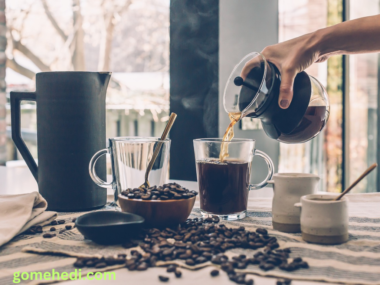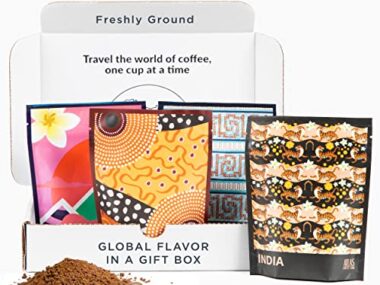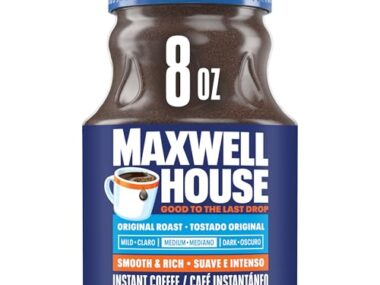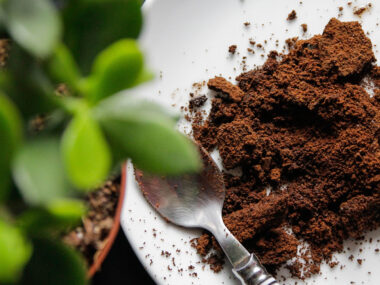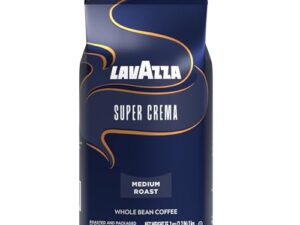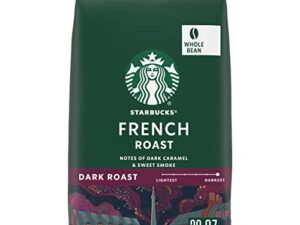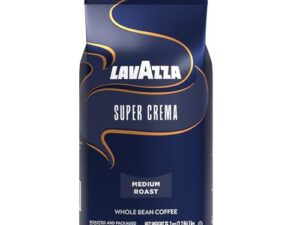To make the best coffee, you need the right method and ingredients. Start with quality beans and fresh water.
Coffee is more than a drink; it’s a ritual. The aroma, the taste, the warmth—all contribute to a perfect experience. Many people seek the best way to brew their coffee at home. With so many methods and tips out there, it can get confusing.
This guide will simplify the process. You will learn the essential steps to make the best coffee. Whether you are a beginner or a coffee enthusiast, you will find valuable tips here. Let’s dive into the world of coffee and discover how to make your perfect cup.
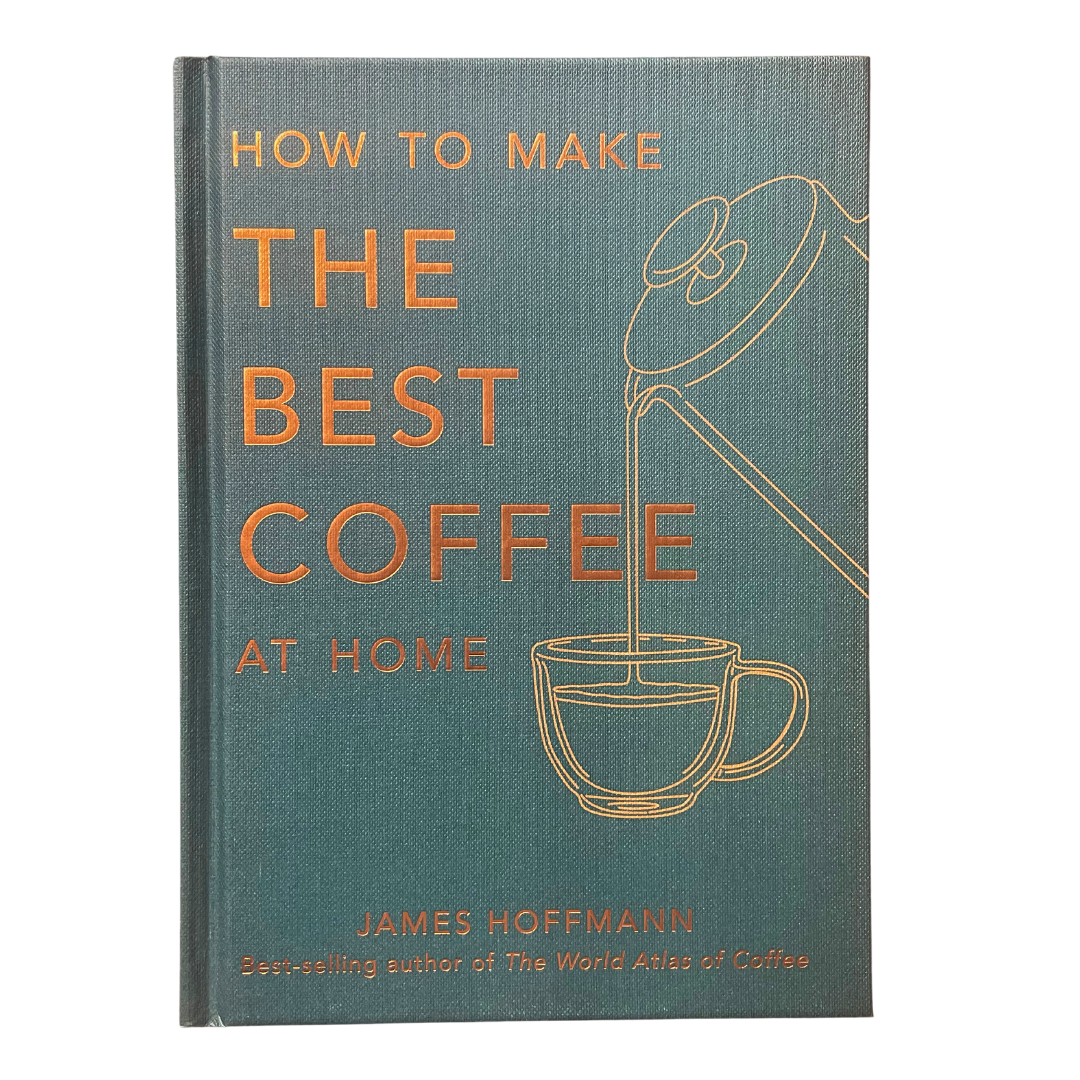
Credit: pegasuscoffee.com
Coffee Selection
Making the best coffee starts with one key element: coffee selection. The beans you choose and the roast they undergo can significantly impact the taste and aroma of your final cup. A great coffee experience begins with understanding these essential components.
Choosing Beans
Choosing the right coffee beans can be a delightful journey. Beans come from various regions, each offering unique flavors. Consider these factors when selecting your coffee beans:
- Origin: Coffee beans from different regions have distinct taste profiles. For instance, Ethiopian beans often have floral and fruity notes, while Brazilian beans might be more nutty and chocolatey.
- Variety: There are two main types of coffee beans: Arabica and Robusta. Arabica beans are known for their smooth, sweet taste and higher acidity. Robusta beans are stronger and have a more bitter flavor.
- Processing Method: The way beans are processed also affects their flavor. Washed beans tend to be cleaner and brighter, while naturally processed beans are fruitier and heavier.
To help you decide, here’s a quick comparison of Arabica and Robusta beans:
| Feature | Arabica | Robusta |
|---|---|---|
| Flavor | Smooth, Sweet | Bitter, Strong |
| Caffeine Content | Lower | Higher |
| Acidity | Higher | Lower |
Consider what you enjoy in a cup of coffee. Do you prefer a smooth and sweet taste? Arabica might be your best choice. Or do you like a strong and bitter flavor? Then Robusta could be perfect for you.
Understanding Roasts
The roast level of your coffee beans is equally crucial. Roasting affects the color, flavor, and aroma. Here’s what you need to know:
Light Roasts: These beans are light brown and have a higher acidity. They retain more of the original flavors of the bean, such as floral or fruity notes. Light roasts are great for those who enjoy a brighter coffee.
Medium Roasts: Medium roasts are a balance between acidity and body. They are medium brown and have a slightly sweet flavor with more body than light roasts. This roast is ideal for those seeking a well-rounded cup.
Dark Roasts: Dark roasts are dark brown to almost black. They have a bold, smoky flavor, and the original bean flavors are less pronounced. This roast is perfect for those who prefer a strong, rich coffee.
Here’s a quick guide to help you understand the differences:
| Roast Level | Color | Flavor Profile |
|---|---|---|
| Light | Light Brown | Bright, Fruity, High Acidity |
| Medium | Medium Brown | Balanced, Sweet, Medium Acidity |
| Dark | Dark Brown/Black | Bold, Smoky, Low Acidity |
To sum up, choose your roast based on what you enjoy in your coffee. If you like a bright and fruity cup, go for a light roast. If you prefer a balanced and sweet coffee, medium roast is the way to go. For a bold and strong flavor, opt for a dark roast.

Credit: www.amazon.com
Grinding Techniques
Introduction paragraph about How to Make the Best Coffee and Grinding Techniques…
Grind Sizes
Choosing the right grind size is crucial for making the best coffee. The grind size affects the extraction process and the flavor of your coffee. Here are the different grind sizes and their uses:
- Looks like sea salt
- Best for French press and cold brew
- Similar to rough sand
- Ideal for Chemex and drip coffee makers
- Feels like regular sand
- Perfect for pour-over methods like V60 and drip coffee makers
- Feels smoother than sand
- Great for AeroPress with a 2-3 minute brew time
- Similar to table salt
- Best for espresso machines and stovetop espresso makers
- Feels like powdered sugar
- Used for Turkish coffee
Here is a quick table to summarize the grind sizes:
| Grind Size | Texture | Best For |
|---|---|---|
| Coarse | Sea Salt | French Press, Cold Brew |
| Medium-Coarse | Rough Sand | Chemex, Drip Coffee Makers |
| Medium | Regular Sand | Pour-Over, Drip Coffee Makers |
| Medium-Fine | Smoother Sand | AeroPress |
| Fine | Table Salt | Espresso Machines |
| Extra-Fine | Powdered Sugar | Turkish Coffee |
Tools For Grinding
Using the right tool for grinding coffee is essential. Here are some common coffee grinders:
- Uses rotating blades to chop coffee beans
- Inexpensive and easy to find
- Produces uneven grind sizes
- Uses two revolving abrasive surfaces
- Produces a more consistent grind
- More expensive than blade grinders
- Hand-operated, no electricity needed
- Portable and quiet
- Requires more effort and time
Here is a comparison table for the different types of grinders:
| Grinder Type | Advantages | Disadvantages |
|---|---|---|
| Blade Grinder | Inexpensive, Easy to Use | Inconsistent Grind, Noisy |
| Burr Grinder | Consistent Grind, High Quality | Expensive, Requires Maintenance |
| Manual Grinder | Portable, Quiet | Time-Consuming, Requires Effort |
Choosing the right grinder and grind size can make a significant difference in the taste and quality of your coffee. Experiment with different combinations to find your perfect cup.
Brewing Methods
Introduction paragraph about How to Make the Best Coffee and Brewing Methods…
Coffee lovers know that the brewing method can make or break your cup of joe. The perfect coffee is not just about the beans; it’s about how you brew them. Different brewing methods bring out unique flavors and aromas. Let’s dive into some of the best techniques for brewing coffee at home.
Pour Over
The pour-over method is a favorite among coffee enthusiasts. It offers complete control over the brewing process. This method involves pouring hot water over coffee grounds in a filter. The water flows through the grounds, extracting flavors before dripping into a carafe or cup.
Steps to make pour-over coffee:
- Boil water to around 200°F (93°C).
- Place a filter in your pour-over dripper.
- Add freshly ground coffee to the filter.
- Slowly pour hot water over the grounds in a circular motion.
- Let the coffee drip through the filter.
- Enjoy your fresh cup of pour-over coffee.
Advantages:
- Control over brewing time and temperature.
- Enhanced flavor extraction.
- Simple equipment.
Disadvantages:
- Requires precision and patience.
- Longer brewing time.
French Press
The French Press is a classic and straightforward brewing method. It involves steeping coffee grounds in hot water and then pressing the grounds out. This method is known for producing a rich and full-bodied coffee.
Steps to make French Press coffee:
- Boil water and let it cool slightly (around 200°F).
- Add coarsely ground coffee to the French Press.
- Pour hot water over the grounds.
- Stir gently to mix.
- Place the lid on and let it steep for about 4 minutes.
- Press the plunger down slowly.
- Serve and enjoy your robust French Press coffee.
Advantages:
- Rich, full-bodied flavor.
- No need for paper filters.
- Easy to use.
Disadvantages:
- Can be messy.
- Requires coarse grinding.
Espresso
Espresso is a strong and concentrated coffee brewed by forcing hot water through finely ground coffee. It’s the base for many coffee drinks like lattes and cappuccinos. Espresso machines can be complex, but the result is worth it.
Steps to make espresso:
- Preheat your espresso machine.
- Grind coffee beans finely.
- Fill the portafilter with the ground coffee.
- Tamp the coffee to ensure even extraction.
- Lock the portafilter into the machine.
- Start the brewing process.
- Enjoy your shot of espresso.
Advantages:
- Strong, concentrated flavor.
- Quick brewing time.
- Base for various coffee drinks.
Disadvantages:
- Expensive equipment.
- Requires skill and practice.
Water Quality
Making the best coffee starts with more than just the beans. The quality of the water you use is crucial. Good water can enhance the flavors, while poor quality water can ruin even the best beans. Let’s explore how to get the best water for your coffee.
Ideal Temperature
The temperature of the water plays a key role in extracting the flavors from the coffee grounds. The ideal temperature range is between 195°F and 205°F (90°C to 96°C). Water that is too hot can over-extract, making your coffee bitter. On the other hand, water that is too cold can under-extract, resulting in weak and flavorless coffee.
Here is a simple guide:
- Use a thermometer to check the water temperature.
- If you don’t have a thermometer, bring water to a boil and let it sit for 30 seconds.
Water temperature can also be influenced by the brewing method:
| Brewing Method | Ideal Temperature |
|---|---|
| Pour Over | 200°F (93°C) |
| French Press | 200°F (93°C) |
| Espresso | 200°F (93°C) |
| Cold Brew | Room temperature or cold |
Maintaining the right water temperature ensures you get the best taste from your coffee. It’s a simple step that makes a big difference.
Water Types
The type of water you use affects the taste of your coffee. Tap water, bottled water, and filtered water each have different impacts on the final flavor.
Tap Water:
- Convenient and readily available.
- May contain minerals and chemicals like chlorine, which can affect taste.
- Consider using a water filter to remove impurities.
Bottled Water:
- Consistent quality and usually free of contaminants.
- Can be expensive and not environmentally friendly.
Filtered Water:
- Balances convenience and quality.
- Removes chlorine and other chemicals while retaining beneficial minerals.
- Use a home water filter for the best results.
Here is a comparison table:
| Water Type | Pros | Cons |
|---|---|---|
| Tap Water | Convenient, inexpensive | May contain impurities |
| Bottled Water | Consistent quality | Expensive, less eco-friendly |
| Filtered Water | Good balance of quality and cost | Initial cost of filter systems |
Choosing the right water type ensures you get the best flavor from your coffee. It is worth investing in quality water for a better coffee experience.
Coffee-to-water Ratio
Making the best coffee involves more than just choosing quality beans and using the right equipment. The coffee-to-water ratio plays a crucial role in determining the taste and strength of your brew. By understanding the ideal ratio, you can ensure a consistent and flavorful cup every time.
Standard Ratios
The standard coffee-to-water ratio is essential for achieving the perfect balance between flavor and strength. The most common ratio is 1:16, which means 1 gram of coffee for every 16 grams of water. This ratio is widely accepted for its ability to provide a well-balanced cup of coffee. Here are some standard ratios for different brewing methods:
- Drip Coffee Maker: 1:15 to 1:17
- French Press: 1:12 to 1:15
- Pour Over: 1:15 to 1:17
- Espresso: 1:2 to 1:2.5
- Aeropress: 1:16 to 1:17
Using these ratios, you can ensure that your coffee is neither too weak nor too strong. For example, if you are using a drip coffee maker and you want to brew 500 grams of coffee, you would use about 30 grams of coffee beans (500 grams / 16 = 31.25 grams).
| Brewing Method | Coffee-to-Water Ratio |
|---|---|
| Drip Coffee Maker | 1:15 to 1:17 |
| French Press | 1:12 to 1:15 |
| Pour Over | 1:15 to 1:17 |
| Espresso | 1:2 to 1:2.5 |
| Aeropress | 1:16 to 1:17 |
Adjusting For Taste
While standard ratios provide a good starting point, personal taste preferences may require adjustments. Some people prefer a stronger cup, while others enjoy a milder flavor. Here are some tips for adjusting the coffee-to-water ratio to suit your taste:
- Stronger Coffee: Use a higher coffee-to-water ratio. For example, try 1:14 instead of 1:16. This means more coffee and less water, resulting in a bolder flavor.
- Weaker Coffee: Use a lower coffee-to-water ratio. For instance, try 1:18. This means less coffee and more water, leading to a lighter taste.
- Experiment: Start with small adjustments. Change the ratio by 1 gram at a time and taste the difference.
Remember, factors like grind size, water temperature, and brewing time also affect the taste of your coffee. A finer grind can make the coffee taste stronger, while a coarser grind can make it taste weaker. Similarly, hotter water extracts more flavors, while cooler water extracts fewer.
In summary, while the standard coffee-to-water ratio is a great guideline, don’t hesitate to tweak it. Your perfect cup of coffee depends on your unique taste preferences. Enjoy the process of finding your ideal brew!
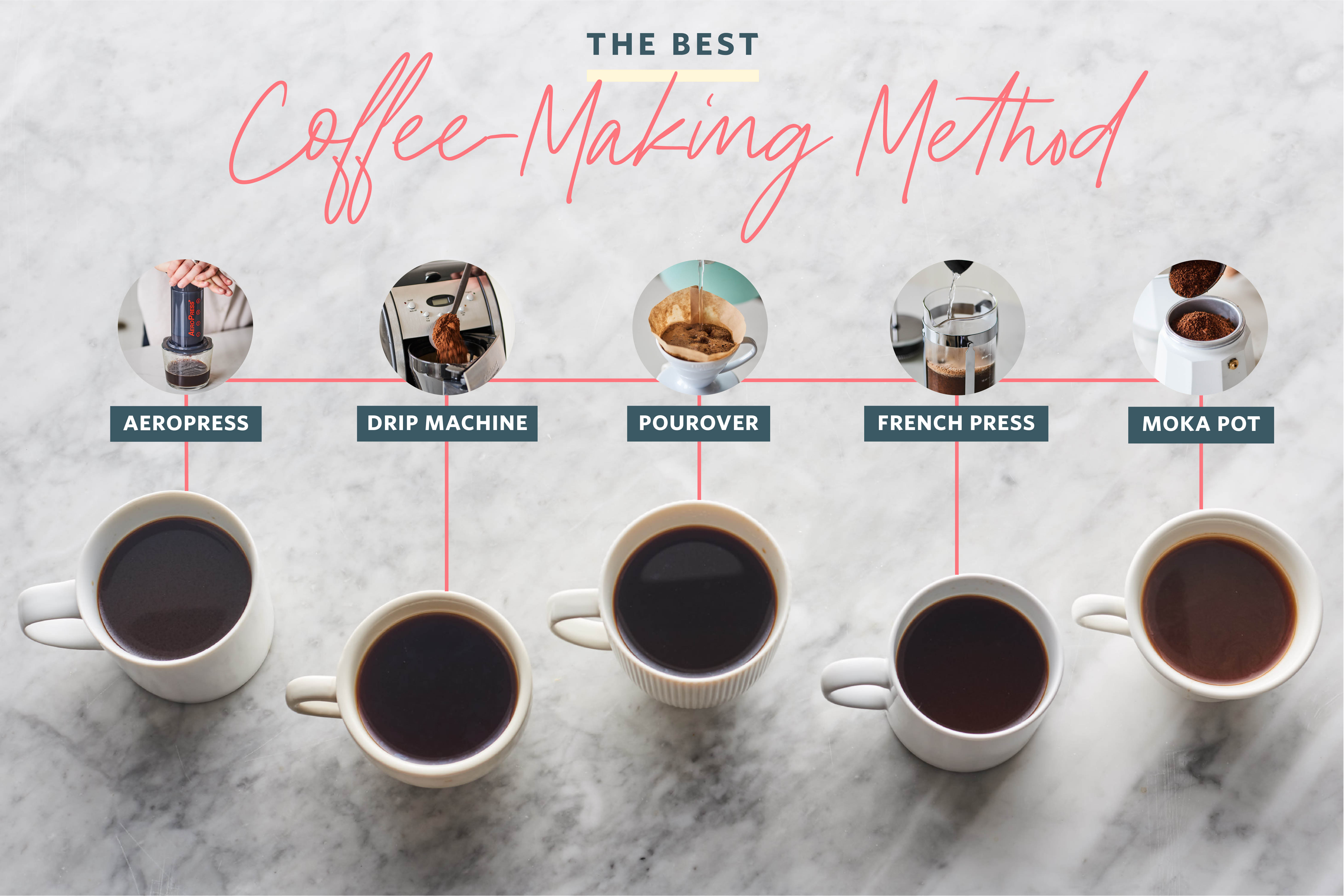
Credit: www.thekitchn.com
Flavor Enhancements
Introduction paragraph about How to Make the Best Coffee and Flavor Enhancements…
Making the best coffee involves more than just selecting high-quality beans. Flavor enhancements can elevate your coffee experience, turning a simple cup into a delightful treat. By experimenting with various spices, additives, and milk options, you can discover new dimensions of flavor and richness.
Spices And Additives
Adding spices and other flavor enhancers can transform your coffee into a unique and enjoyable experience. Here are some popular options to consider:
- Cinnamon: A pinch of cinnamon can add a warm, sweet flavor to your coffee. It pairs well with most coffee types and is especially good in the fall and winter months.
- Vanilla Extract: A few drops of vanilla extract can give your coffee a smooth and sweet taste. It’s a great way to add flavor without extra calories.
- Nutmeg: This spice offers a rich, nutty flavor. Use it sparingly to avoid overpowering your coffee.
- Cardamom: Popular in Middle Eastern coffee, cardamom adds a complex, aromatic flavor. Crush a few pods and add them to your coffee grounds before brewing.
- Honey: For a natural sweetener, try honey. It adds sweetness and a slight floral note to your coffee.
Combining these spices and additives can lead to interesting and delicious results. Here’s a table to help you mix and match:
| Spice/Additive | Recommended Pairings |
|---|---|
| Cinnamon | Vanilla, Nutmeg |
| Vanilla Extract | Cinnamon, Honey |
| Nutmeg | Cinnamon, Cardamom |
| Cardamom | Nutmeg, Honey |
| Honey | Vanilla, Cardamom |
Milk And Cream Options
Choosing the right milk or cream can make a big difference in your coffee’s taste and texture. Here are some options to consider:
- Whole Milk: This option provides a creamy texture and rich flavor. It’s a classic choice for a good reason.
- Skim Milk: If you prefer a lighter option, skim milk offers less fat while still adding some creaminess.
- Half-and-Half: For a richer coffee, try half-and-half. It is a blend of milk and cream, offering a perfect balance.
- Heavy Cream: This choice gives your coffee a luxurious, velvety texture. A little goes a long way.
- Plant-Based Milk: Options like almond, soy, and oat milk cater to those who are lactose intolerant or vegan. Each type brings its own unique flavor and texture.
To help you decide, here’s a comparison table:
| Milk/Cream | Texture | Flavor |
|---|---|---|
| Whole Milk | Creamy | Rich |
| Skim Milk | Light | Mild |
| Half-and-Half | Creamy | Rich |
| Heavy Cream | Velvety | Luxurious |
| Almond Milk | Light | Nutty |
| Soy Milk | Creamy | Neutral |
| Oat Milk | Creamy | Slightly Sweet |
Experimenting with different milk and cream options can help you find the perfect balance for your taste preferences. Enjoy the process of discovering your ideal cup of coffee.
Storage Tips
Making the best coffee involves more than just the right beans and brewing method. Proper storage of coffee beans is crucial to maintain their freshness and flavor. This section provides essential storage tips to help you enjoy a perfect cup every time.
Keeping Beans Fresh
To keep your coffee beans fresh, follow these simple tips:
- Store in a cool, dark place: Light and heat can degrade the beans, causing a loss of flavor. Keep them away from direct sunlight and heat sources.
- Avoid moisture: Moisture can lead to mold and spoilage. Always store your beans in a dry environment.
- Use whole beans: Whole beans stay fresh longer than ground coffee. Grind only the amount you need before brewing.
- Limit air exposure: Air can cause oxidation, which makes the beans stale. Use airtight containers to minimize air contact.
Below is a table that summarizes these tips:
| Tip | Reason |
|---|---|
| Store in a cool, dark place | Prevents light and heat damage |
| Avoid moisture | Prevents mold and spoilage |
| Use whole beans | Keeps beans fresh longer |
| Limit air exposure | Prevents oxidation |
Best Containers
Choosing the right container for your coffee beans is essential. Here are some options:
- Airtight containers: These containers are the best for keeping your beans fresh. They prevent air from entering and keep out moisture.
- Opaque containers: Light can degrade the beans. Choose containers that block light completely.
- Vacuum-sealed containers: These containers remove excess air, which helps in preserving the beans’ freshness for a longer time.
- Ceramic or stainless steel containers: These materials are excellent for maintaining a stable environment for your beans. Avoid plastic as it can impart unwanted flavors.
Here’s a quick comparison of different container types:
| Container Type | Benefits | Drawbacks |
|---|---|---|
| Airtight | Keeps air out, prevents moisture | Needs to be sealed properly |
| Opaque | Blocks light | May not be airtight |
| Vacuum-sealed | Removes excess air | Can be expensive |
| Ceramic/Stainless Steel | Stable environment, no flavor imparted | Heavier, can be costly |
By following these storage tips, you can ensure your coffee beans remain fresh and flavorful, leading to the best coffee experience.
Tasting Techniques
To make the best coffee, understanding tasting techniques is essential. These techniques allow you to appreciate the complex flavors and aromas of your brew. They help you identify the nuances that make each cup unique and enjoyable. Let’s dive into some effective ways to taste coffee like a pro.
Savoring Flavors
One key aspect of tasting coffee is savoring its flavors. This involves paying close attention to the taste profile of each sip. Here are some tips to help you savor coffee flavors:
- Take Small Sips: Small sips allow you to fully experience the coffee’s flavor without overwhelming your taste buds.
- Swirl the Coffee: Swirl the coffee in your mouth to spread the flavors across your palate.
- Notice the Balance: Pay attention to the balance of sweetness, bitterness, and acidity.
- Focus on Aftertaste: The aftertaste can reveal additional flavors that linger after swallowing.
To better understand coffee flavors, you can use a flavor wheel. The table below shows some common flavor notes found in coffee:
| Flavor Category | Examples |
|---|---|
| Fruity | Berry, Citrus, Apple |
| Nutty | Almond, Hazelnut, Walnut |
| Spicy | Cinnamon, Clove, Pepper |
| Sweet | Caramel, Chocolate, Honey |
By focusing on these aspects, you can train your palate to recognize and appreciate the various flavors in your coffee.
Identifying Aromas
Aromas play a crucial role in the coffee-tasting experience. They often hint at the flavors you will taste. Here are some techniques to help you identify coffee aromas:
- Smell Before Sipping: Always smell your coffee before taking the first sip. This helps you identify the initial aromas.
- Inhale Deeply: Take a deep breath through your nose to capture the full range of aromas.
- Use a Clean Cup: Ensure your cup is clean to avoid contamination from other scents.
Common coffee aromas include:
- Floral: Jasmine, Rose, Lavender
- Fruity: Berry, Citrus, Stone Fruit
- Nutty: Almond, Hazelnut, Walnut
- Sweet: Caramel, Chocolate, Vanilla
- Earthy: Mushroom, Wet Soil, Tobacco
To enhance your ability to identify aromas, practice by smelling a variety of foods and spices. This helps build your scent memory, making it easier to recognize similar aromas in coffee.
By focusing on these techniques, you can enhance your coffee-tasting skills and enjoy each cup more fully. Experiment with different coffees and see how many aromas and flavors you can identify.
Frequently Asked Questions
How Do You Make The Perfect Coffee At Home?
To make perfect coffee at home, use fresh beans and grind them right before brewing. Use the correct water-to-coffee ratio. Heat water to just below boiling. Brew for 4-5 minutes and enjoy.
How Do You Make Coffee Taste Better?
Use fresh, high-quality coffee beans. Grind them just before brewing. Use filtered water. Maintain the right coffee-to-water ratio. Adjust brewing time.
What Is The Secret To Good Coffee?
The secret to good coffee is using fresh, high-quality beans. Grind them just before brewing. Maintain optimal water temperature and brewing time. Clean equipment regularly.
What Is The Tastiest Coffee Method?
The tastiest coffee method often depends on personal preference. Many people love espresso for its rich flavor and aromatic qualities.
Conclusion
Making the best coffee is simpler than you think. Just follow the steps. Choose quality beans and the right grind size. Use fresh, cold water. Brew with care and patience. Enjoy the rich aroma and taste. Experiment with different methods and flavors.
Each cup can be a new adventure. Share your coffee journey with friends. Your perfect cup awaits each morning. Happy brewing!

